& Construction

Integrated BIM tools, including Revit, AutoCAD, and Civil 3D
& Manufacturing

Professional CAD/CAM tools built on Inventor and AutoCAD
4 min read

In the world of Architecture, Engineering, and Construction (AEC), the importance of seamless coordination across various design functions and disciplines cannot be overstated. Properly aligned workflows can transform project outcomes, significantly improving efficiency and minimizing the need for multiple design iterations. With advanced tools like BIM Collaborate Pro, an Autodesk Construction Cloud (ACC) product, design coordination has entered a new era, enabling projects to be managed with greater precision, security, and traceability. The following video explores how BIM Collaborate Pro facilitates this coordination process, ensuring that every discipline can collaborate seamlessly while enhancing project quality. Watch it now to see how advanced design coordination can transform AEC project workflows.
A well-structured review process through design coordination is key to achieving large efficiency gains. Establishing this process at both the company and project levels is critical for effective collaboration, ensuring that every discipline adheres to project standards and procedures from the beginning. This approach enables various teams, each contributing their specialized expertise, to work cohesively within a shared framework. As a result, it reduces rework and streamlines the journey toward the final design.
Large-scale construction projects often involve multiple companies, each contributing specialized data for their respective design disciplines. Effective project-level coordination facilitates this collaboration by enabling secure data sharing among these companies. This involves creating a robust environment where each discipline can exchange information with stakeholders while also managing their internal data-sharing needs.
Using BIM Collaborate Pro, companies can create a shared coordination space specifically for this purpose. The shared coordination space acts as a controlled environment where design data can be securely shared and managed, enhancing both security and traceability. Additionally, the platform’s clash detection features enable teams to identify and resolve potential issues early on, ensuring a smoother path to project completion.
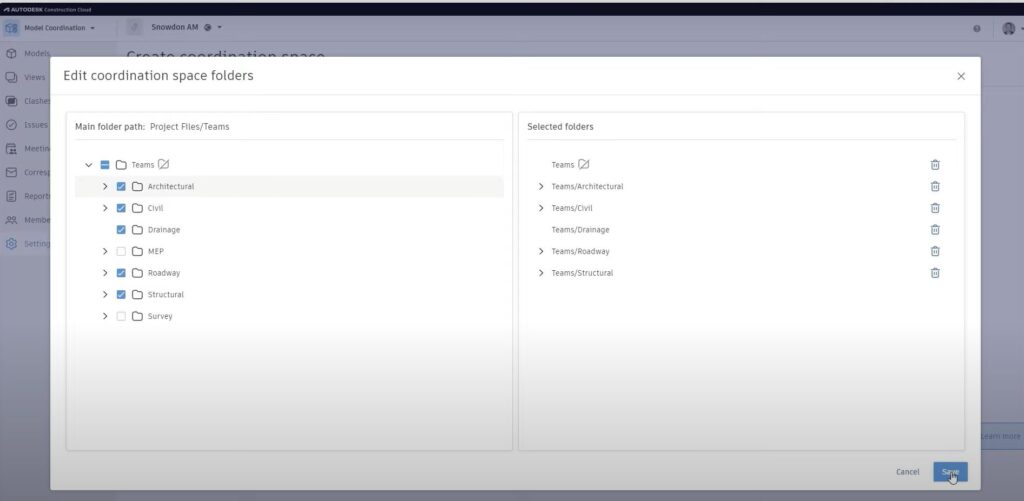
Within each company, design disciplines need a collaborative framework to refine their designs and optimize quality before sharing with other project stakeholders. BIM Collaborate Pro allows companies to set up dedicated coordination spaces, where teams can run internal clash checks and coordinate data among internal disciplines, such as architectural, structural, and MEP. By using live connections for data sharing, these internal teams can ensure that each design aspect aligns well before it is integrated at the project level.
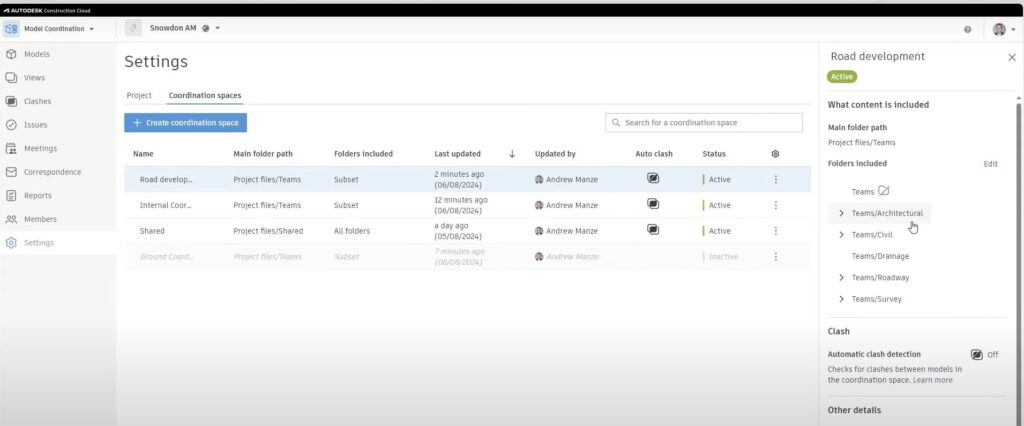
Setting up a project within ACC often starts with the use of project templates. These templates store critical project parameters, standards, and member permissions, allowing for consistent setup across projects. By defining permissions at a folder level, project administrators can control access based on team roles, ensuring that collaborators only interact with the data they need. This security-first approach is crucial for maintaining control over sensitive project information.
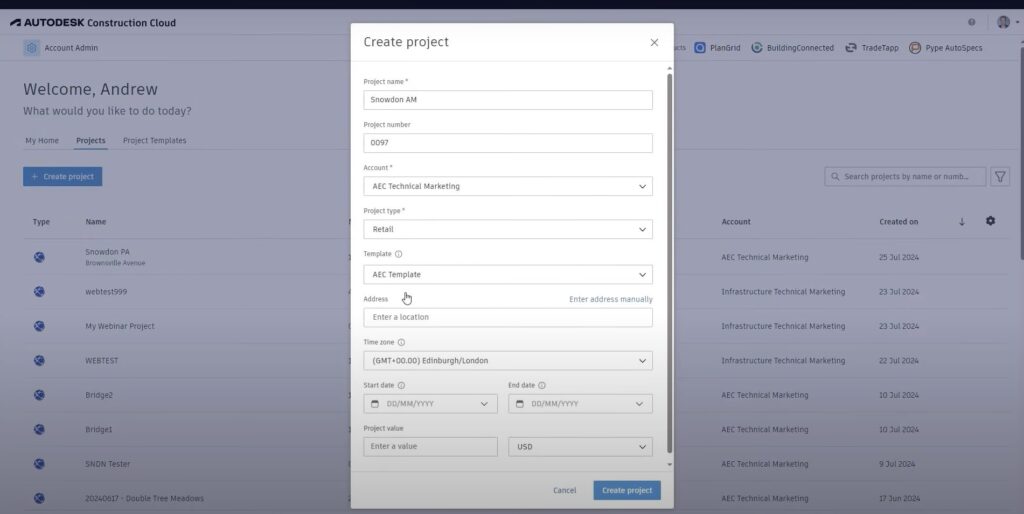
“The refined standard project management folder structure and templates intuitively caused project participants to explore the use of all available modules, reducing management by email and spreadsheets.”
– Ann Blanchard, Senior Project Manager, Arcadis
Every construction project evolves, and the BIM Collaborate Pro coordination spaces are designed to adapt to these changes. For example, new coordination spaces can be added, and existing ones can be adjusted by modifying content folders, enabling clash detection, or even renaming the spaces as project needs shift. This flexibility ensures that the coordination setup remains relevant and useful throughout the project lifecycle.
Design collaboration workflows within the Autodesk Construction Cloud streamline data sharing across companies. Here’s how it works. Once a design team—say the structural team—creates a data package, it is shared along a project timeline. The MEP team, working within the same environment, can then explore this structural data. If they find it necessary for their designs, they “consume” the data, bringing it into their own data structures to inform their design decisions. This shared workflow not only enhances coordination, but also maintains a record of interactions, ensuring traceable and reliable data exchanges.
Effective issue management is vital in collaborative projects. When clashes or concerns arise, they can be tracked and resolved within Autodesk Construction Cloud. For example, if a clash is detected between structural and MEP data, an issue is raised and assigned to the relevant team, with responsible members and response timelines prepopulated via templates. This structured approach enables team members to address issues promptly, redesign as needed, and re-share updated models, keeping all stakeholders informed throughout the resolution process.
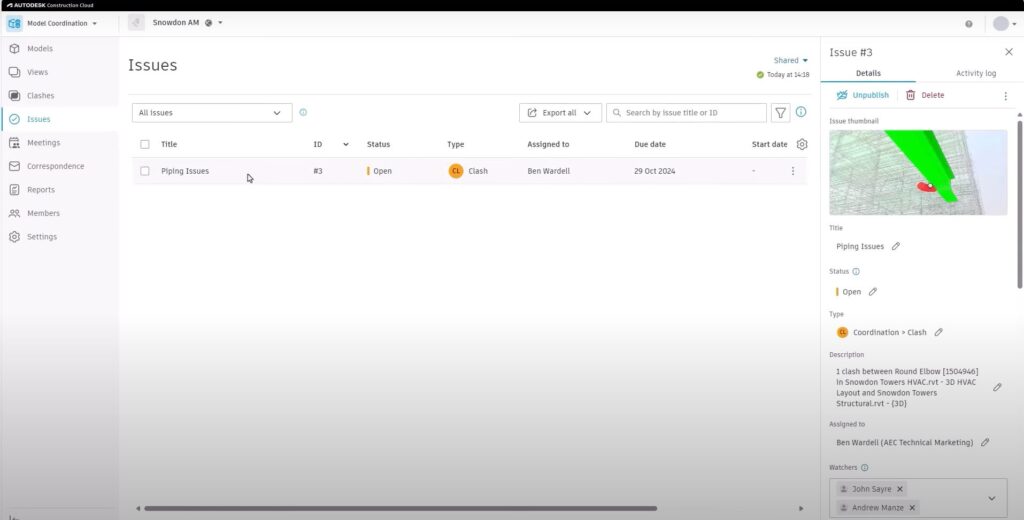
BIM Collaborate Pro, paired with the AEC Collection, empowers design and construction teams to elevate operational efficiency through advanced workflows. By enabling coordinated, flexible, and secure project environments, these tools help teams work more effectively, reduce rework, and ultimately deliver better project outcomes.
Incorporating design coordination with BIM Collaborate Pro into your projects can streamline your team’s workflows, minimize costly errors, and enable more efficient project delivery. With coordination at both company and project levels, teams are set up for success from day one.
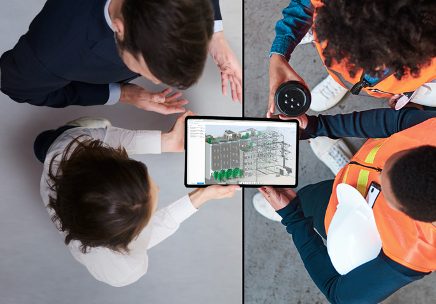
By clicking subscribe, I agree to receive the AEC newsletter and acknowledge the Autodesk Privacy Statement.
Success!
May we collect and use your data?
Learn more about the Third Party Services we use and our Privacy Statement.May we collect and use your data to tailor your experience?
Explore the benefits of a customized experience by managing your privacy settings for this site or visit our Privacy Statement to learn more about your options.